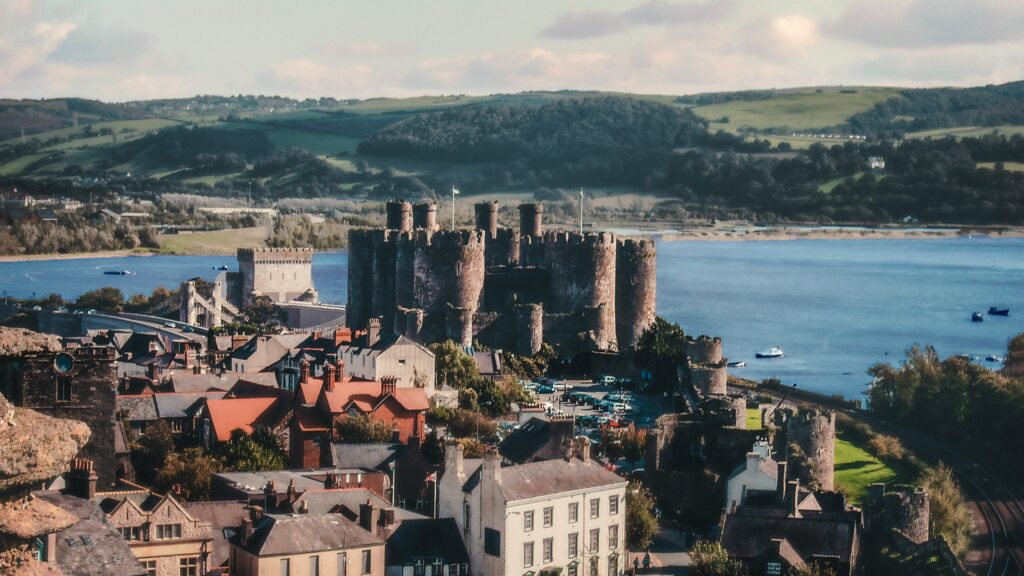Nerys Lloyd-Pierce bemoans the corporate men who are bent on destroying the Welsh capital’s heritage
The Coal Exchange in Cardiff Bay is without doubt one of the city’s most fascinating buildings. Constructed as a base from which traders in the city’s industrial heyday could carry out their globally important work, it is the place where the world’s first £1m deal was struck. One would imagine it’s a building worth cherishing.
However, a freedom of information request, made by conservation engineer Jon Avent who works opposite the Coal Exchange, reveals that Cardiff City Council apparently has an intention to demolish the listed interior, keeping only the facade.
As anyone who has been inside the Coal Exchange will testify, the interior is magnificent. The former trading floor boasts rich wooden panelling, an oak balcony, stained glass… To demolish all this would be to rip the heart out of the Coal Exchange. It would destroy the very aspect of the building that illustrates its potent historical significance.
Inside, it’s possible to imagine the electric atmosphere as coal owners, ship owners and their agents met daily on the floor of the trading hall to negotiate their latest deals. During the peak trading hour of midday to one o’clock, the floor sometimes had as many as 200 men milling around, shouting, gesticulating, and wrangling over prices.
It was estimated that up to 10,000 people passed through the building each day. At one time, the Coal Exchange’s importance was such, that the price of the world’s coal was determined there. Built between 1883 and 1886 the Coal Exchange, was pivotal in Cardiff’s transformation from a small town of some 10,000 people to becoming a key commercial player on the international stage.
In more recent times, the building provided a unique, atmospheric music venue, hosting names as diverse as blues legend Walter Trout, saxophone supremo Courtney Pine and indie rockers Arctic Monkeys. So many Cardiff residents have good memories of evenings spent there, a venue brimming with character amid a sea of insipid establishments.
Cardiff’s fondness for the Coal Exchange is borne out by a newly launched petition aimed at Culture Minister John Griffiths that has already gathered more than 2,000 signatures, a figure that is rising rapidly.
The Coal Exchange is a Grade 11 listed building. The Victorian Society states that such a listing protects much more than the façade. It also protects the interior, plus outbuildings, boundary walls and all other structures within the ‘curtilage’.
The council claims the building is unsafe, and on the point of collapse. However, conservation engineer Jon Avent, who has spent the last 20 years looking at listed buildings in various states of disrepair, says he is of the firm belief that the Coal Exchange is not about to collapse. In his view, it needs a few isolated areas attended to, but nothing too challenging.
It’s hard to fathom why the council cannot see the value of restoring the Coal Exchange, potentially with help from the Heritage Lottery fund. It has been suggested that the council wants to build a modern conference centre behind the Coal Exchange façade. But why use a building of national significance for this purpose, when there are plenty of other options?
A common criticism of Cardiff Bay is that the overwhelming majority of its investment in regeneration went on the modern waterfront development, while the historic core, with its run-down but spectacular old buildings was wilfully ignored. Furthermore, as was pointed out in Apolonija Susteric’s Artes Mundi 2012 contribution, ‘Politics in Space, Tiger Bay Project’, in the brave new world of the revamped bay, culture was ignored.
Sadly, this view is true enough. A visitor with an appetite for a richly diverse cultural experience would find the bay sorely lacking. Even the designation Cardiff Bay lacks the guts and power of a name like Tiger Bay.
Had old and new been married with vision and panache how different the story could have been. Cardiff Bay could have been a thriving and envied cultural centre, a place that seamlessly embraced ancient and modern. Instead, the Bay is a schizoid place of two halves.
How could this have been allowed to happen?
So much of Cardiff’s heritage has already been lost. The canal system that could have been a major tourist attraction is now underground. The picturesque 16th Century ruins of Greyfriars priory were bulldozed and now lie beneath Capital Tower. Almost any other city on the planet would have celebrated the priory as an historical feature to be prized. But planning has never been a Cardiff strong point, and it isn’t today.
With so much already trashed, it seems inconceivable that yet another piece of the city’s fabric can be cast aside with cynical abandon. Yet with will, vision and imagination, a magnificently restored Coal Exchange could be the centrepiece of a revitalised Mount Stuart Square. The Coal Exchange played a hugely important part in the city’s history, it should play an equally important part in the city’s future.
Some years ago I saw the iconic Patti Smith play at the Coal Exchange. Wandering around Cardiff Bay on a pre-performance jaunt, she noted the shoddy new build on the waterfront, and the sad neglect of the spectacular buildings further ‘inland’. She told the audience – ‘don’t let the corporate men destroy your city’. The trouble is, they seem hell-bent on doing so.





Comments are closed.